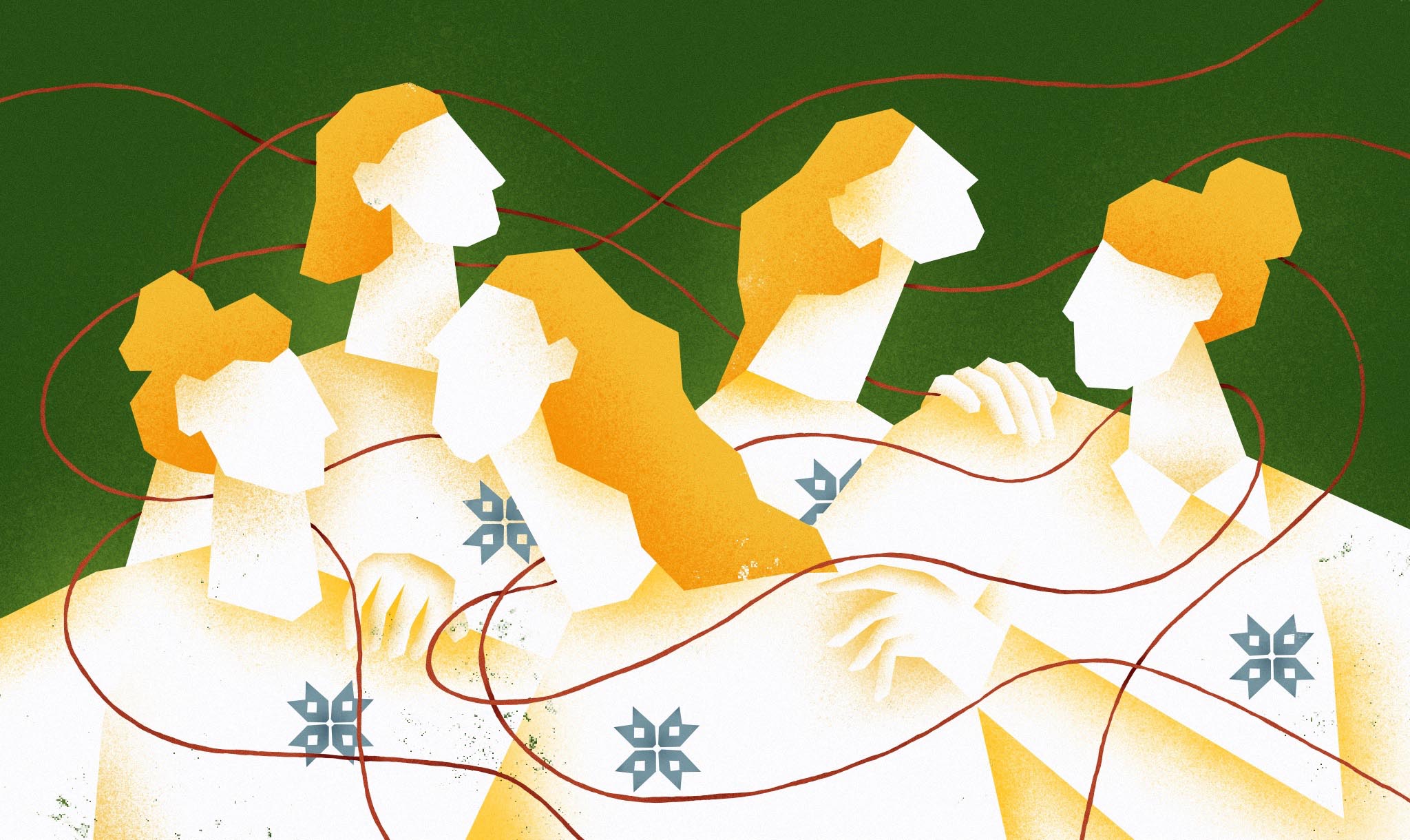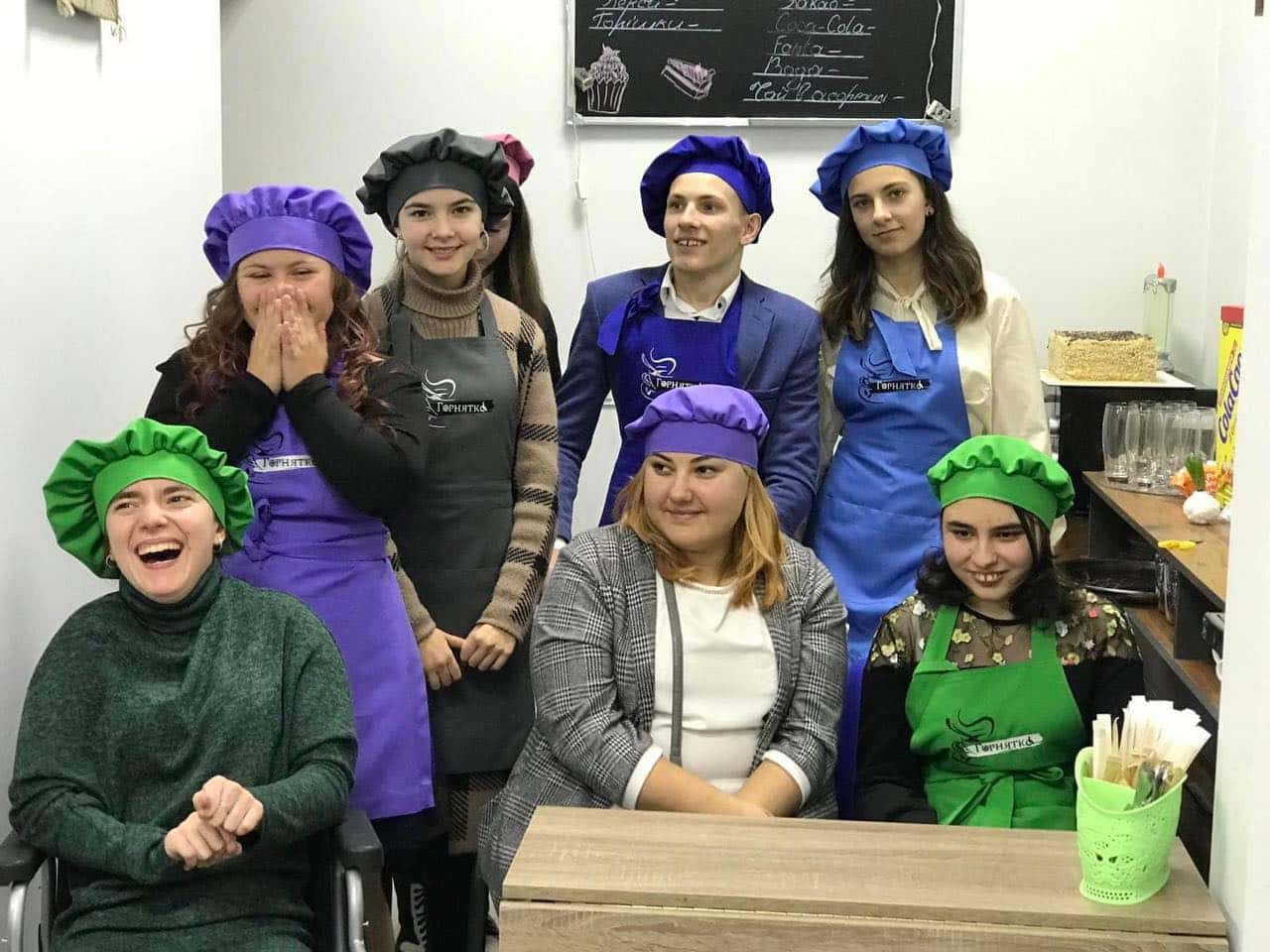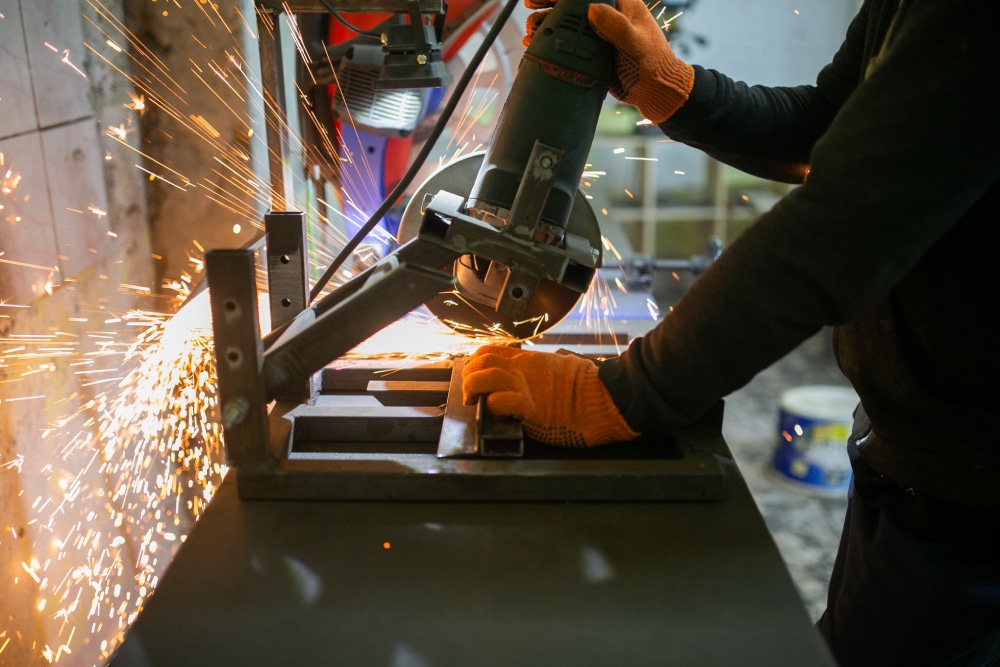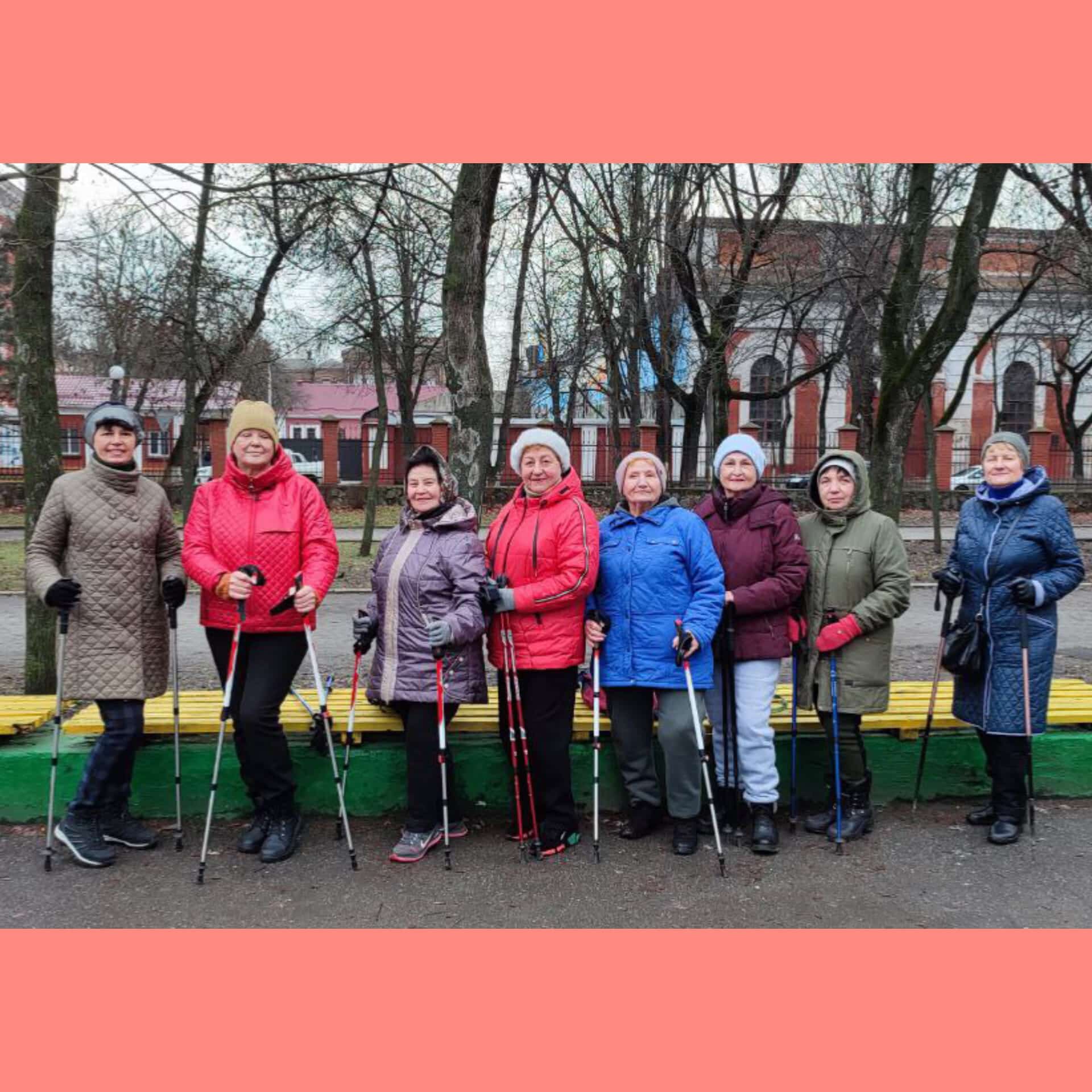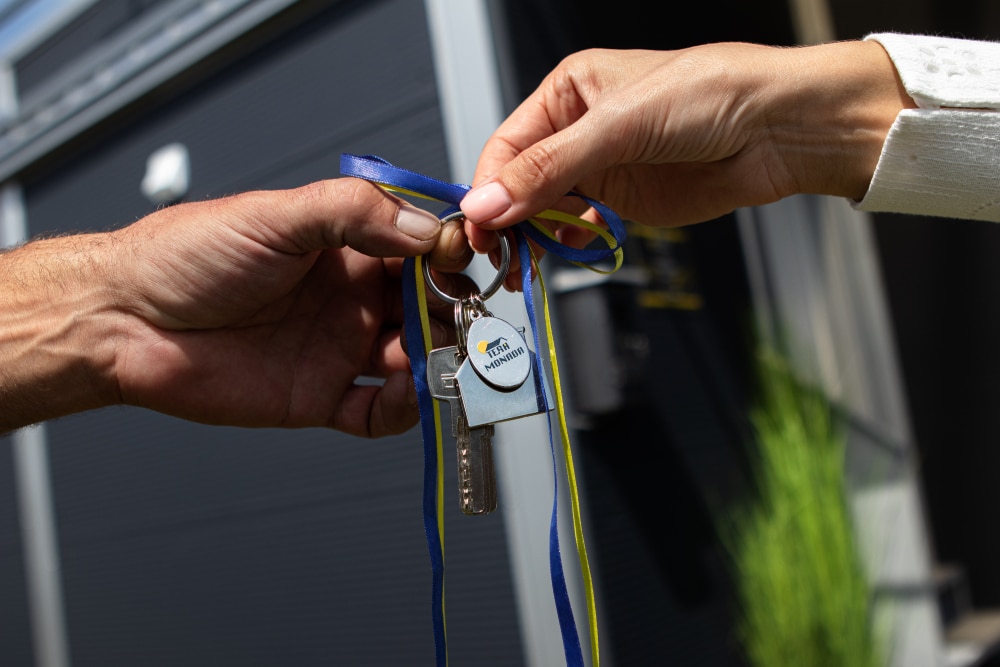Women that have been affected by domestic violence and war have found help offered in a shelter. Apart from the roof over their heads, they also have the opportunity to work and speak about the important through embroideries and symbols of the shirts they sew.
The head of the Saint Olha shelter, Nataliya Dresviannikova, and a social worker, Viktoriya Poplasvksa, told us about embroidered shirts, work for women and the importance of preserving one’s own things.
[Some of the names of the women featuring in this story have been altered. Further details on the shelter are also classified].
Shelter under occupation
After February 24 the shelter found itself under occupation. However, all of its inhabitants had been evacuated just in time. Nataliya says that Russian troops did venture inside the house, but they did not loot it. They even did not notice a power generator inside. After Kyiv province was de-occupied, it was safe again to return to the shelter. There were some holes left by Russian bullets. Local men helped repair it.
Before the Russian invasion, the Saint Olha shelter hosted 6 adults and 8 children. The team of the shelter evacuated everyone to a neighboring town in their own cars. Some of the shelter’s inhabitants made their way abroad right away, while others evacuated later.
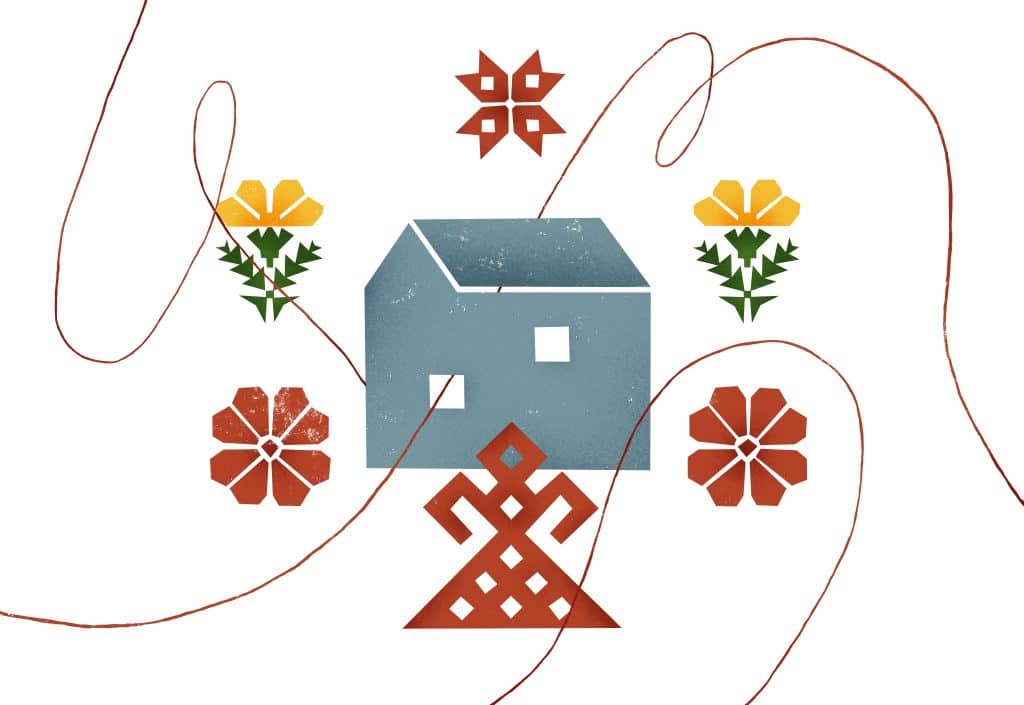
No sooner than in May did the team manage to render the shelter inhabitable again. In June it was open once again for those seeking help. According to Nataliya, it offers help not only to those affected by domestic violence, but also to those affected by the war. The shelter is now making preparations for the winter. A boiler running on solid fuel is about to be installed so as not to depend on natural gas or electricity. The boiler has already been purchased. A special storage room for it is to be built by the end of January.
Social entrepreneurship has been restored in the shelter to preserve the traditions and help women financially. The staple product of the ‚Vilna Nytka‘ (the Ukrainian for ‚a free thread’ – translator’s note) enterprise is an embroidered shirt. Natalya says that the motto of the enterprise is ‚Restore the embroidered shirt of your grandma‘. That was their first order, actually: a young woman came to the shelter, saying that she had found such a shirt of her grandmother lying in a chest and that she wanted to have one just like it.
‚Her story struck a chord with us. She told us her quite personal story. Her grandmother was exposed to violence, just like her mom. The woman herself was experiencing similar problems in her family, and she did not want to pass it down to the next generation. She said she did not want her daughter to experience the same. The shirt that we restored has become a symbol, an amulet for her family’.
Ornament and the chance to work
The public organization Eleos Ukraine, which deals with humanitarian issues, evacuation and fights violence, has opened 4 shelters for those affected by violence and war. A rehabilitation center has been opened in West Ukraine. The center admits women who have been subjected to sexual violence by Russian military.
A network of shelters is expanding. The Saint Olha shelter was the first one. It can host 12 people. However, there can be more people seeking help. In this case, additional children’s beds are installed. The shelter looks just like any other building in the neighborhood, while its exact whereabouts are held in secret. The team cooperate with local police units and social services. Therapists work with the women in the shelter, offering individual and group sessions.
Social entrepreneurship at the Saint Olha shelter was launched in April 2021. Back then, being a social worker, Nataliya (who has a degree in ethnicity studies) suggested doing embroidery, since it had an effect of an art therapy.
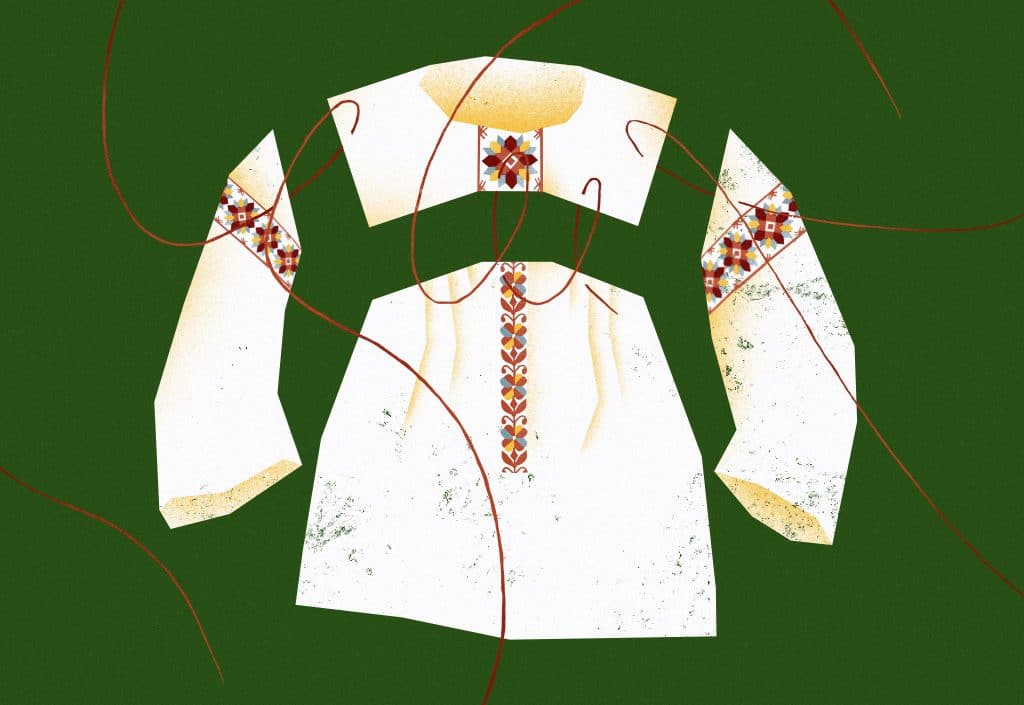
‚We came up with the idea of offering women to land a paid job, since they often come without the chance of getting an officially recognized job since they have lost their IDs, for example. Or they have a little child, being unable to work full time’, Natalya says.
The women in the shelter accepted the offer, although not all of them knew how to sew. The first shirt was embroidered by hand, which was a time consuming undertaking. They understood their business would not prosper this way. Therefore, a decision was taken to purchase sewing machines and have the women learn to work on them. This would help spend less time on orders and enhance the quality of the end product.
At the end of 2021 the team set off preparing to raise funds for the sewing machine worth 30 thousand UAH (at that time about 1000 USD – translator’s note) on the platform ‚Velyka idea‘ (the Ukrainian for ,a big idea’ – translator’s note). A fair was held for the members of the community. The team baked cookies and spread the word about their idea. The fundraising process had to be cut short due to the Russian invasion. Nataliya says they had doubts about whether they should have carried on with the fundraising since the shelter was no longer functioning. However, in April the needed sum was raised and all necessary equipment was purchased. The team also received a grant for women’s professional education. Afterwards, a modular house was erected on the shelter’s premises. Inside the house a workshop room was installed.
Four female employees are working with ‚Vilna Nytka‘ now. Two of them reside in the shelter, with another one coming from the neighborhood. There is also the fourth employee, a social worker named Viktoriya, who coordinates the processes due to her background in sewing. Nataliya, who came up with the idea of social entrepreneurship, moved to Poland following the invasion. The team of the shelter are waiting for her to come back, being happy about the chance to bring her dream to life.
Tetyana Serebrennikova, the author of the book about the embroideries made by Olena Kosach, who was the mother of Lesya Ukrainka (one of Ukrainian literature’s foremost writers – translator’s note), helped develop ornaments and shapes of shirts. It was Tetyana who helped add authenticity to the embroidery, the ones that were worn by our ancestors. Shortly after ‚Vilna Nytka‘ started its work, its team landed a big contract. They had to sew 50 (to be worn both by men and women) shirts, two of the shirts meant for each Ukrainian region. The developed designs are now being used to fulfill commissions for clients in Lithuania, the USA and Portugal.
Apart from shirts, ‚Vilna nytka‘ produces openwork New Year’s toys, with some of them being made of special threads glowing in the dark.
Processes and stories
The path from receiving a commission and completing it in the form of a finished embroidered shirt is quite enthralling and full of many personal stories.
When the client places an order, having previously made up their mind about the design, the team sets about cutting up those parts of the shirt that will have an embroidery on.
This task is normally completed by Nadia. She has joined the staff recently. She spent 4 years in captivity in the so-called Donetsk and Luhansk People’s Republics. She has made it to the Ukrainian government controlled territories this year. She is currently facing some issues while trying to land a job (and to receive social payments) since she has not managed to restore her IDs yet. Nadia cannot return home as it is located in the temporarily occupied territories. New people have already settled in her home. However, in ‚Vilna Nytka‘ the woman has found a place for herself. She is experienced in sewing and has learned how to cut up parts of the shirt. According to Nataliya, the team tries to support Nadia as much as they can, willing to offer her support in such a difficult period of her life.
After the cutting-up stage is over, parts of the shirt are placed under a special frame. The embroidery stage begins. This process is supervised by Tanya. She has 4 children, having experienced occupation together with her family firsthand. Tanya now comes to work at the working shop in the new building. Nataliya says that Tanya is planning to do a course on ornament design and keep herself busy with relevant tasks in the future.
With the sewing machine clattering, the employees are supervising the whole process. In the meantime, they are taking care of the embroideries from previous projects by removing fusible linings and superfluous fabrics. The women from the shelter are often engaged in this kind of work. They do not possess the relevant experience but they do want to help.
As soon as the shirt is deprived of superfluous fabrics, time comes for it to be steamed. Each element of the embroidery is thoroughly steamed with a steam generator lest the shirt should lose its form. Either Nadia or Tanya usually takes care of this process.
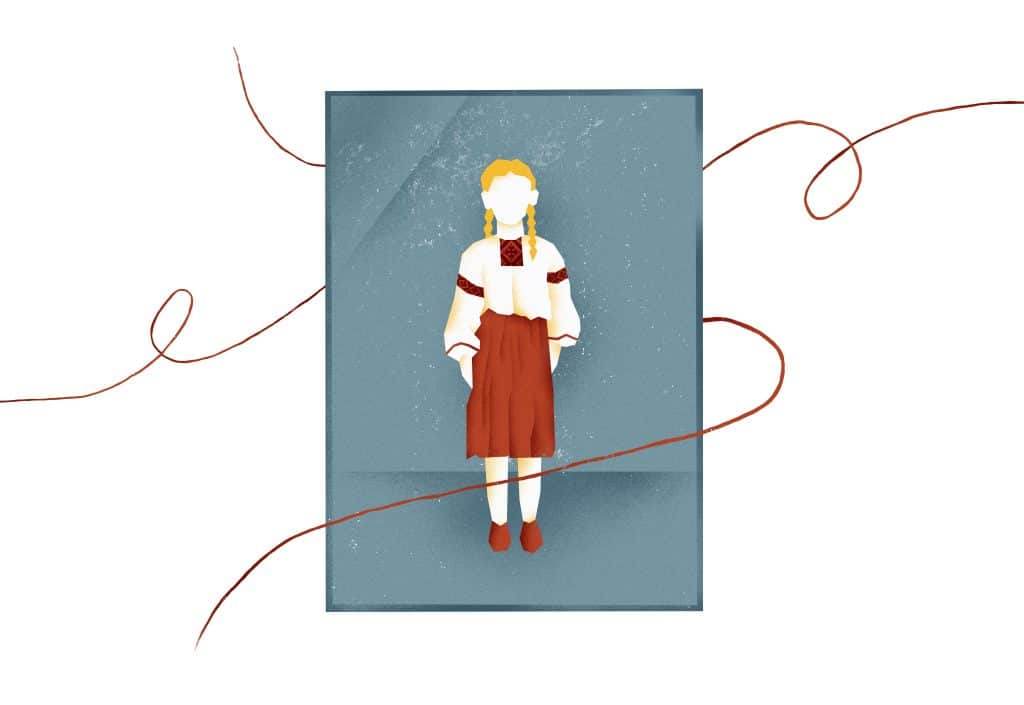
Nadia may also perform the cutting-up procedure of a new ready made shirt. Viktoriya, who works as a social worker in the center, used to run a small sewing atelier, which means she is well aware of all the stages of sewing clothes.
Anna sews back together the cut up shirt with authentic seams. She is a professional seamstress. She came to the Saint Olha shelter in July last year. Her home is located in the temporarily occupied territories. Her son is a soldier serving in the Ukrainian army. He has been held in Russian captivity since the first days of the Russian invasion. The only question that occupies Anna’s mind is how her son is doing, when a prisoner swap is going to be held and when she will see her son. Nataliya says ‚Vilna Nytka‘ is blessed to have Anna as she is a very conscientious person.
A few more things are left to be done. Buttons are sewn onto the shirt, the collar is adjusted. Tanya supervises the process. The shirts are then sent to the client.
A shirt embroidered with stars
We talked to Viktoriya Poplavska about the meaning that embroidered shirts convey. It is not simply about clothes. The shirts are also about paying homage to one’s kith and kin, about getting to know yourself on a deeper level and conveying important things through ornament.
There are symbols galore when it comes to embroidery. Viktoriya tells us that the first embroidered shirts (the ones that were part of the 50-shirt series) represented Ukrainian Donetsk and Luhansk provinces. The relevant commission was received before the full-fledged invasion. However, the team gave top priority to making the shirts that are traditional for those two regions.
Viktoriya has taken a keen interest in embroidery since her childhood. She recalls helping her grandmother working on handmade embroidery commissions for a factory. They would embroider some patterns and then send them to the factory. There the shirts were stitched together and other ornaments were sewn onto them that were previously done by Viktoriya and her granny.
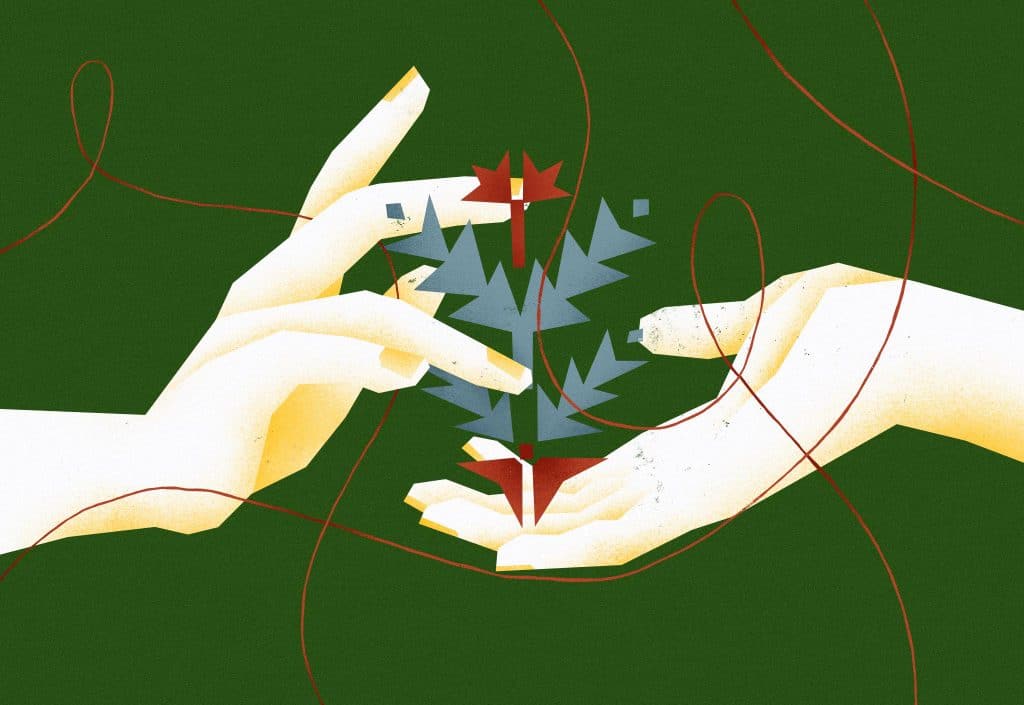
Viktoriya then took to sewing rather than embroidering. At ‚Vilna Nytka‘ she at first kept herself mainly busy with studying different types of sewing. However, life circumstances made her return to embroidery. Viktoriya is now learning how to use the sewing machine and immersing herself more into the symbolism of ornaments.
Viktoriya saw the first shirt that left an indelible imprint on her memory back in the kindergarten. She recollects it to the smallest details. It was a short made in Kyiv province with patterns in the forms of stars. Stars would mostly appear on girls’ shirts. It was believed that stars would bring girls luck and a bright future. Unfortunately, Viktoriya lost the shirt, but she is still pursuing the dream of recreating it from memory.
Viktoriya says that people choose ornaments intuitively from the regions where they were brought up or where their nearest and dearest lived.
‚I like shirts from Kyiv and Vinnytsia province, embroidered with svarhas (a pagan symbol connected with the Slavic god Svaroh – translator’s note), as well as black and yellow ornaments. My paternal grandma came from Vinnytsia province, so the embroidered shirts from the early 20th century strike a chord with me. Also, people opt for the ornaments that are close to their kin’.
Unfortunately, her family has not preserved any shirts from the olden days, which makes Viktoriya search for them elsewhere. The woman believes that Ukrainians thought of embroidered shirts as garments, without seeing any value in them and being ready to reject this heritage of theirs. However, they managed to regain their independence and, thus, find their roots.
Viktoriya believes that the thing that makes symbols special is that they can change, acquire different colors or change their location on the shirt, while retaining their deep sense and conveying more information about our nation and identity in modern times.
Children’s shirts and military chevrons
‚Vilna Nytka‘ is adapting to a new reality. Due to power outages it has become more challenging to plan its work. However, this does not dissuade the enterprise from making plans. Aside from embroidered shirts the team are making chevrons for the military. According to Nataliya, anyone may commission a new set of chevrons for a particular Ukrainian soldier, thus making their own contribution.
The team are also planning to sew children’s shirts and kryzhma, the special fabric used to wrap a child during the sacred mystery of baptism. Nataliya hopes her team will be able to establish processes well so that ‚Vilna Nytka‘ can receive commissions for different types of clothing and not only embroidered shirts. This will also help raise salaries for the employees and cover the utility costs. Currently, the team get paid in proportion to the number of commissions and the time during which they are engaged in ‚Vilna Nytka’s‘ activities.
Our readers may also support ‚Vilna Nytka‘. All you have to do is leave a comment on the enterprise’s Instagram page and commission embroidered shirts. These shirts will serve as not simply a piece of clothes, but as the continuation of your kin, conveying important meanings and preserving memories that can accompany you every day.

